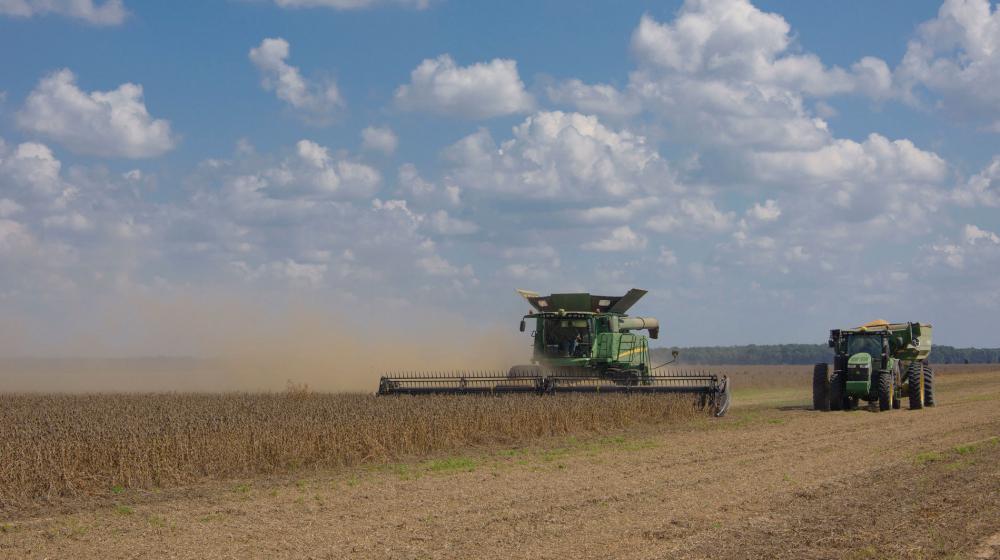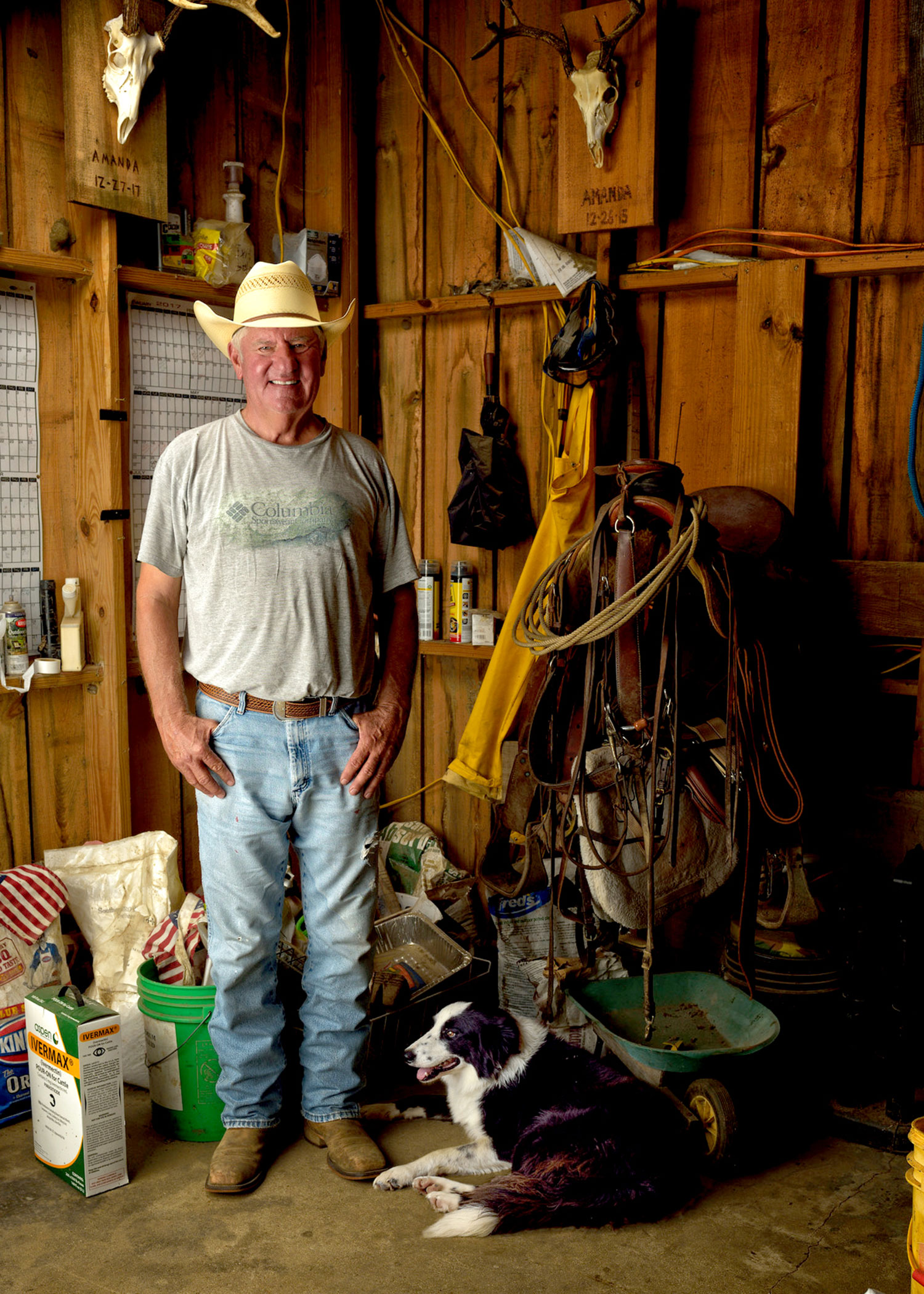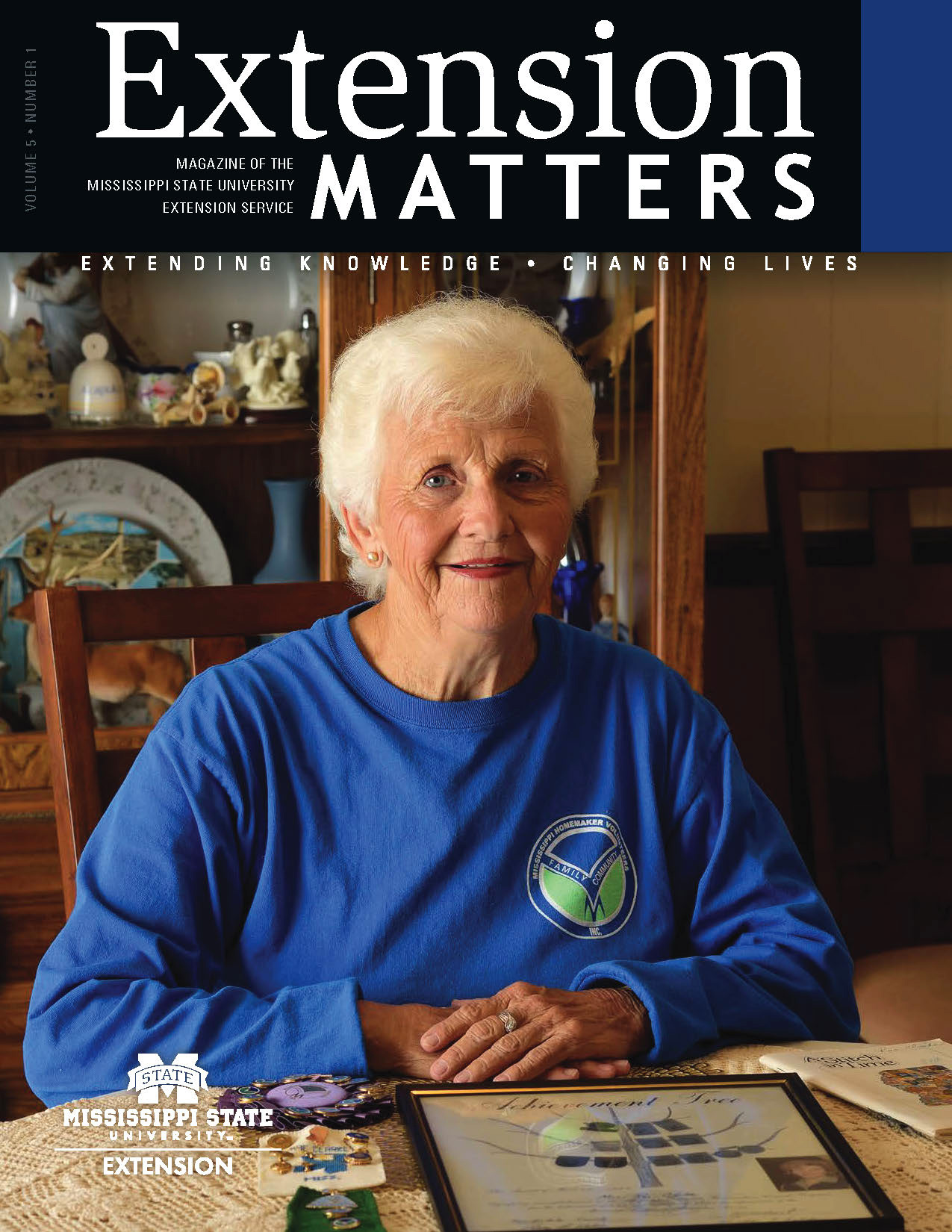More Than a Business

Family farm brings enjoyment along with income

Story by Susan Collins-Smith • Photos by Kevin Hudson
On his Rolling Fork farm, Bill Rutherford is living the life he dreamed of as a child.
At 14 years old, Rutherford and his older brother helped their dad work row crops on rented land. Rutherford has since purchased those 2,000 acres and rents another 2,000 acres. He and his son, Will, grow soybeans and corn and raise 200 head of cattle. They also care for 13 horses, a few goats, pigs, and some chickens.
“Farming just kind of stuck to me. I really enjoyed it,” Rutherford says about his decision to make farming a career. “My brother wasn’t interested in it, but, after high school, I started farming with my dad full-time.”
Rutherford’s father worked for the U.S. Department of Agriculture Farm Service Agency, and the family moved to the Delta when Rutherford was in eighth grade.
“A few years later, my dad decided to start growing row crops. We didn’t know anything when we started out. We’d never even been on a tractor. We tore up a bunch of stuff,” Rutherford recalls with a laugh.
But they learned as they went, often turning to friends for advice and the Mississippi State University Extension Service for information on the best varieties to plant and best management practices. That was especially the case in the early days and after Rutherford’s father suddenly passed away about 10 years after they’d begun farming together.
Today, Rutherford’s son, Will, who has taken on most of the day-to-day operations of Kin Growers, looks to Extension to help him make decisions about row-crop irrigation.
Bill Rutherford explains how the Mississippi State University Extension Service is increasing his efficiency and profitability.
“My son handles all of the technology we use. We irrigate 50 to 60 percent of our crops, and Will has used information from Extension to install and run all of that equipment.”
“Technology has changed everything we do. Our combine can tell you everything about the crop you’re harvesting—yield per acre, percentage of moisture in the beans, everything. It’s amazing.”
The family also uses Extension resources extensively for their cattle business. They’ve taken just about every course Extension offers on cattle, including the Beef 101 Workshop, Beef Bootcamp, the Master Cattle Producer class, and the Beef Quality Assurance Program.
Emily Carter, Extension agent in Sharkey and Issaquena Counties, says the Rutherfords work with several Extension agents and state specialists who help them answer questions about animal care and best practices related to their farm. But they are more than clients. They are Extension partners.
“They are great to work with. They are some of the greatest 4-H supporters we have. When we have 4-H’ers participating in livestock showing, Bill welcomes us to his property, where the kids can practice because we don’t have a county facility," Carter explains. “They are very generous to open up their property the way they do. And they do it for others in the community, too. Bill gives young people opportunities to work and learn. He and his family are an asset to Extension and to the community.”
The farm is more than a business. It’s a way of life for the Rutherford family. Everyone, including their seven grandchildren, is involved on the farm. Rutherford’s wife, Mindy, and their daughter handle the books, and the whole family pitches in to work cattle and handle other chores.
“We have 13 horses—enough for everybody to have one when we work the cattle. We have a lot of fun out here. We come out here to relax, and we have friends and family out here for cookouts and other gatherings. Farming is a tough business but an absolutely wonderful way of life.”


